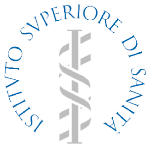

The sudden cardiac attacks and brain strokes kill many people without advance warning. Often the hidden reason for these tragic events is the "silent" formation of plaque which can build to the point of blocking the blood flow or separate itself from the wall and float in the blood stream to another location where it can obstruct or even stop blood flow. Example of the latter is the vulnerable plaque formation in the cardiac region, while causing blockage of brain artery, which results in stroke. Both cardiac and brain artery blocking events have catastrophic consequences to the cardiac muscle or brain, respectively. The blocked artery deprives these organs of oxygen necessary for their functioning. This in turn leads to cardiac muscle or brain damage, which is often irreversible, and in many cases leads directly to death.
Unfortunately, the presently available standard diagnostic techniques applicable to screening for formation and in detection of vulnerable plaque by ultrasound or with standard clinical medicine (molecular) imagers, such as gamma cameras and PET scanners, are not optimized for the challenging task of detecting these low abundance targets. However, an excellent promise is offered by spin-offs from recent progress in high performance detection technologies developed primarily for and by the particle physics community. Developments in new scintillators, photodetectors, solid state materials, fast electronics, fast data acquisition systems, fast computer algorithms, etc, originally intended for the fundamental experimental research, are examples of these successful techniques ready for implementations in high performance nuclear medicine cardiac, neck, and brain imagers. In addition, medical imaging community developed recently new approaches to gamma collimation schemes substantially increasing single gamma detection efficiency. Other examples of very important application areas where high resolution and high sensitivity gamma imaging detectors of these novel designs have high potential to detect and image other low abundance targets, are detection of amyloid plaques in Alzheimer disease, early signs of Parkinson disease, schizophrenia, depression, effects of drug addictions, and other abnormalities in functioning of the brain. Yet another essential application area is stem cell localization and monitoring during therapy of myocardial diseases and brain therapy. The main focus of this meeting is:
Editorial Board
Franco Garibaldi (chairman), Michael Hofmann, Paul Lecoq, Stan Majewski, Orazio Schillaci, Francesco Scopinaro, Benjamin Tsui

| proceedings index |
| High efficiency high Resolution SPECT tecniques for cardiac imaging PoS(FISBH2006)001 pdf |
| High resolution magnetic resonance techniques for myocardial perfusion and vascular imaging in rodents PoS(FISBH2006)002 pdf |
| 1) Morphological imaging: MRI 2) Multimodality and Special Imaging Techniques PoS(FISBH2006)003 pdf |
| Quantitative and bi-modal (optical-MRI) imaging of the vulnerable atherosclerosis plaque in the mouse with specific functional markers PoS(FISBH2006)005 pdf |
| Etiology of vascular related infections PoS(FISBH2006)006 pdf |
| Recent Advances in small animal SPECT instrumentation and techniques PoS(FISBH2006)008 pdf |
| New instruments : PET HPD PoS(FISBH2006)009 pdf |
| Models for quantitative Neuroimaging PoS(FISBH2006)013 pdf attachments |
| Molecular imaging of experimental stroke : animal models, PET and SPECT radiotacers PoS(FISBH2006)014 pdf |
| PET for cerebrovascular diseases: status and limitation PoS(FISBH2006)017 pdf |
| Imaging of vulnerable plaques PoS(FISBH2006)019 pdf |